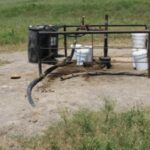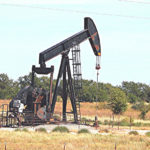ONLINE | ON-DEMAND | SELF-PACED Course | Instructed by Dr. Kerry L. Sublette
Ready to Sign-Up? Click Here
Scroll down to learn how this course would be beneficial for you and your team.
A ‘HOW TO Manual’ for the remediation and restoration of sites impacted by releases of hydrocarbons (crude oil, diesel, and condensate) and produced water or saltwater to soil in an oil and gas exploration and production setting.
Starting with the basics and working forward, this online course is the SOP (standard operating procedure) for remediation and restoration.
It is designed to help participants learn the language of these procedures and practices which will increase their understanding of the process and facilitate better communication with environmental professionals and regulators with whom they work.
The course also provides the scientific basis of these concepts, assisting in better understanding of, and providing real-world application of, its content.
– be able to manage your own soil remediation project for a recent, small release of hydrocarbons or produced water (brine)
– be able to evaluate vendor claims for soil remediation products
– be able to tell when a contractor knows what they are doing”
KEY BENEFIT: Real-World Application of Course Content
 INSTRUCTOR:
INSTRUCTOR:
Kerry L. Sublette, PhD, is Emeritus Professor of Chemical Engineering and the Sarkeys Professor of Environmental Engineering, Retired at The University of Tulsa (TU). He has over 40 years of experience in a wide variety of bioengineering problems. These include biodegradation of hydrocarbons, biotreatment of various hazardous waste streams, bioreactor design and scale-up, design and operation of pilot and full-scale bioreactors and bioremediation systems, soil ecosystem restoration, and remediation of brine-impacted sites.
Prior to joining the faculty at TU, Dr. Sublette worked for 6 years in a corporate R&D environment for Combustion Engineering. In addition to developing new bioprocessing technologies, he was responsible for reviewing the technology base of various bioprocessing and biological waste treatment companies for possible acquisition by Combustion Engineering.
He has 13 U.S. patents, 10 of those in bioprocessing inventions, and over 120 refereed publications in bioprocessing, bioremediation, and soil remediation.
For over 10 years he served as the Director of the Integrated Petroleum Environmental Consortium (IPEC), an EPA Research Center with the goal of increasing the cost effectiveness of environmental remediation in the oil and gas industry. For 26 years, he also chaired the annual International Petroleum Environmental Conference. He has provided training in soil remediation for EPA on-scene coordinators and for the EPA Oil Spill Program. He also served on the Oklahoma Board of Environmental Quality.
This Course is DESIGNED for:
- EHS Professionals from large oil and gas companies to small producers
- Environmental Consultants
- State and Federal Regulators
- Oil and Gas Service Personnel
- Pipeline Company Employees
- Environmental Attorneys
- Landowners
- Anyone interested in how to remediate and restore hydrocarbon and brine contaminated soil
COURSE OUTLINE:Bioremediation of Hydrocarbon Contaminated Soils
|
Remediation & Restoration of Brine Contaminated Soils Part I: – Defining the Problem – The Metrics of Brine Spill Characterization and Remediation – The Basis of Remediation Part II: – First Response – Site Characterization Part III: – Defining Remediation – In Situ vs. Ex Situ Remediation – Basic Principles of In Situ Remediation – The Tool Box (Water Requirements; Drainage; Groundwater Protection) Part IV: – The Tool Box (Lateral Drainage; Amendments, Calcium, Organic Matter; Phytoremediation Phase; Revegetation) Part V: – In Situ Remediation Protocol – Case Studies Part VI: – More Case Studies – Course Conclusion |
COURSE FORMAT:
- Online, On-Demand, Self-Paced
- 10 video modules (power point + audio)
- Downloadable PDFs of all course notes
QUESTIONS about the course content are welcome at any time. Just reach out to the instructor, Dr. Kerry Sublette at kerry-sublette@utulsa.edu
ACCREDITATION INFORMATION:
This program meets the criteria for educational continuing professional development credit requirements in various state and national professional organizations. In order to be awarded the full professional development hours/units listed and receive a Certificate of Completion, you must successfully complete the entire course. We ask that participants self-report their attendance to their organization.
- 21 PDHs (Professional Development Hours)
- 2.1 CEUs (Continuing Education Units)
REGISTRATION INFORMATION & FEE (net US dollars):INDIVIDUAL Registrations @ $895.00 per person
Once you register and pay the registration fee, you will receive an email from University of Tulsa CESE with your unique username and password with instructions on how to access this online course.
GROUPS of 4 or more are eligible for a discounted rate of $745/person!
Contact The University of Tulsa CESE if you are interested in the group discount: cese@utulsa.edu





